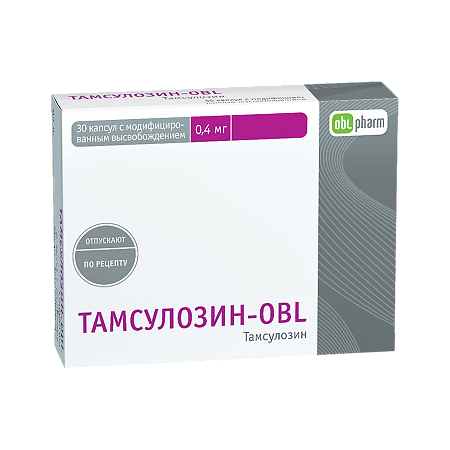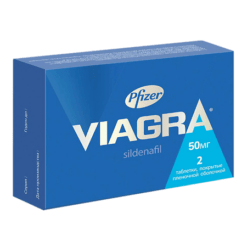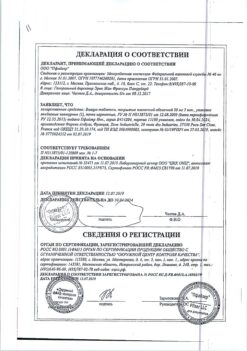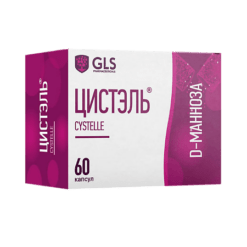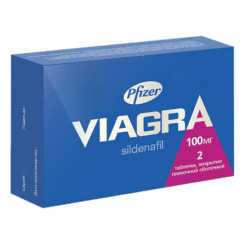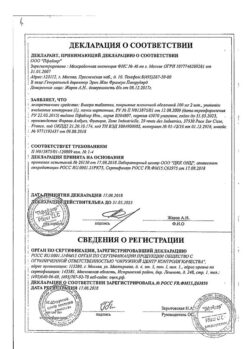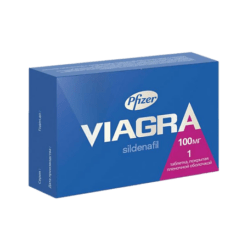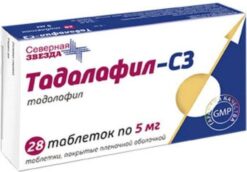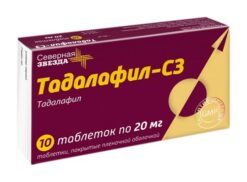No products in the cart.
Tamsulosin-OBL, 0.4 mg 30 pcs
€17.56 €14.63
Description
Tamsulosin selectively and competitively blocks postsynaptic alpha1A-adrenoreceptors located in the smooth muscles of the prostate, bladder neck and prostatic part of the urethra as well as alpha1D-adrenoreceptors mainly located in the bladder body.
This leads to decrease of tone of smooth muscles of the prostate, bladder neck and prostatic part of the urethra, improves urine outflow, decreases symptoms of obstruction and irritation of urinary tract in benign prostatic hyperplasia.
The ability of tamsulosin to affect alpha1A-adrenoreceptors is 20 times greater than its ability to interact with alpha1A-adrenoreceptors located in vascular smooth muscle.
Owing to this high selectivity, the drug does not cause any clinically significant systemic decrease in arterial pressure (BP) both in patients with arterial hypertension and in patients with normal baseline BP. As a rule, therapeutic effect is achieved 2 weeks after initiation of the drug.
Pharmacokinetics
Tamsulosin is well absorbed in the intestine and has almost 100% bioavailability. Absorption of tamsulosin slows down slightly after meals. The same level of absorption can be achieved if the patient takes the drug after the usual breakfast each time. Tamsulosin is characterized by linear kinetics.
After a single oral administration of 0.4 mg of the drug, its maximum plasma concentration (Cmax) is reached after 6 hours. After repeated oral intake of 0.4 mg per day the equilibrium concentration (Csс) is reached by the 5th day, and its value is about 2/3 higher than the value of this parameter after a single dose.
The binding to plasma proteins is 99%, the volume of distribution is small (about 0.2 l/kg).
Tamsulosin is slowly metabolized in the liver to form less active metabolites. Most of tamsulosin is present in plasma in unchanged form.
In the experiment the ability of tamsulosin to slightly induce the activity of microsomal liver enzymes was revealed. In mild to moderate hepatic insufficiency there is no need to adjust the dosing regimen.
Tamsulosin and its metabolites are mainly excreted in the urine, with approximately 9% of the drug excreted unchanged.
The elimination half-life (T½) of the drug is 10 hours with a single dose of 0.4 mg after a meal, and 13 hours with multiple doses. There is no need to decrease the dose in renal failure, but in patients with severe renal insufficiency (creatinine clearance (CK) less than 10 ml/min) tamsulosin administration should be used with caution.
Indications
Indications
Treatment of functional symptoms of benign prostatic hyperplasia (BPH).
Pharmacological effect
Pharmacological effect
Tamsulosin selectively and competitively blocks postsynaptic alpha1A-adrenergic receptors located in the smooth muscles of the prostate gland, bladder neck and prostatic urethra, as well as alpha1D-adrenergic receptors, mainly located in the body of the bladder.
This leads to a decrease in the tone of the smooth muscles of the prostate gland, bladder neck, prostatic urethra, improves urine outflow, reduces symptoms of obstruction and irritation of the urinary tract in benign prostatic hyperplasia.
Tamsulosin’s ability to act on alpha1A adrenergic receptors is 20 times greater than its ability to interact with alpha1A adrenergic receptors located in vascular smooth muscle.
Due to such high selectivity, the drug does not cause any clinically significant systemic reduction in blood pressure (BP) both in patients with arterial hypertension and in patients with normal baseline blood pressure. As a rule, the therapeutic effect is achieved 2 weeks after starting the drug.
Pharmacokinetics
Tamsulosin is well absorbed from the intestine and has almost 100% bioavailability. The absorption of tamsulosin slows down somewhat after eating. The same level of absorption can be achieved if the patient takes the drug after a normal breakfast each time. Tamsulosin is characterized by linear kinetics.
After a single oral dose of 0.4 mg of the drug, its maximum plasma concentration (Cmax) is reached after 6 hours. After repeated oral administration of 0.4 mg per day, the equilibrium concentration (Css) is reached by the 5th day, while its value is approximately 2/3 higher than the value of this parameter after taking a single dose.
Plasma protein binding is 99%, the volume of distribution is small (about 0.2 l/kg).
Tamsulosin is slowly metabolized in the liver to form less active metabolites. Most of tamsulosin is present in the blood plasma in unchanged form.
The experiment revealed the ability of tamsulosin to slightly induce the activity of microsomal liver enzymes. With minor and moderate degrees of liver failure, no adjustment of the dosage regimen is required.
Tamsulosin and its metabolites are primarily excreted in the urine, with approximately 9% of the drug excreted unchanged.
The half-life of the drug (T½) with a single dose of 0.4 mg after meals is 10 hours, with multiple doses – 13 hours. In case of renal failure, no dose reduction is required; if the patient has severe renal failure (creatinine clearance (CC) less than 10 ml/min), tamsulosin should be prescribed with caution.
Special instructions
Special instructions
At the first signs of orthostatic hypotension (dizziness, weakness), you should sit or lie down until these symptoms disappear.
Before starting treatment with tamsulosin, it is necessary to evaluate the patient to exclude other diseases that can cause the same symptoms as benign prostatic hyperplasia.
Before starting treatment with the drug and during therapy, you should regularly examine the prostate gland and, if necessary, determine prostate specific antigen (PSA). Due to the possibility of complications during cataract surgery, it is not recommended to prescribe tamsulosin treatment to patients with cataracts if surgery is planned.
When taking tamsulosin, drowsiness, blurred vision, dizziness and fainting are possible, so the drug should be used with caution while working by vehicle drivers and people whose profession requires increased concentration.
Impact on the ability to drive vehicles and operate machinery
During the treatment period, it is necessary to refrain from engaging in potentially hazardous activities that require increased concentration and speed of psychomotor reactions.
Active ingredient
Active ingredient
Tamsulosin
Composition
Composition
1 modified-release capsule contains:
active ingredients:
tamsulosin hydrochloride 0.400 mg, equivalent to tamsulosin 0.367 mg;
excipients:
microcrystalline cellulose (101),
methacrylic acid and ethyl acrylate copolymer (1:1),
triethyl citrate,
talc,
water,
sodium hydroxide/hydrochloric acid.
Contraindications
Contraindications
Hypersensitivity to tamsulosin hydrochloride or other components of the drug Tamsulosin;
Orthostatic hypotension (including history);
Severe liver failure.
With caution:
Severe renal failure (decrease in creatinine clearance below 10 ml/min).
Side Effects
Side Effects
Frequency of adverse reactions: often (>1%, 0.1%, 0 01% From the nervous system: often – dizziness, infrequently – headache, rarely – fainting; sleep disturbance (drowsiness or insomnia);
From the cardiovascular system: infrequently – tachycardia, orthostatic hypotension; chest pain;
From the respiratory system: infrequently – rhinitis.
From the digestive system: infrequently – constipation, diarrhea, nausea, vomiting.
From the skin and skin: infrequently – rash, itching, urticaria; rarely – angioedema.
From the genitourinary system: infrequently – retrograde ejaculation, very rarely – priapism; decreased libido;
Others: sometimes – asthenia, back pain, small pupil syndrome during cataract surgery.
Interaction
Interaction
No interaction was observed when tamsulosin was taken concomitantly with atenolol, enalapril, nifedipine or theophylline. When taken simultaneously with cimetidine, the concentration of tamsulosin in the blood plasma increases, and when taken simultaneously with tamsulosin with furosemide, it decreases.
However, no dose adjustment is required since tamsulosin concentrations remain within the therapeutic range.
In vitro, diazepam, propranolol, trichlormethiazide, chlormadinone, amitriptyline, diclofenac, glibenclamide, simvastatin and warfarin do not change the level of the free fraction of tamsulosin in the blood plasma. In turn, tamsulosin does not change the content of free fractions of diazepam, propranolol, trichlormethiazide and chlormadinone in the blood plasma.
There was no interaction of tamsulosin with amitriptyline, salbutamol, glibenclamide and finasteride in in vitro studies. When taken simultaneously with tamsulosin, diclofenac or warfarin may increase the rate of elimination of tamsulosin.
When taking tamsulosin simultaneously with drugs that lower blood pressure, including other alpha1-blockers and anesthetics, the hypotensive effect may be enhanced.
Overdose
Overdose
No cases of overdose have been described; acute hypotension is theoretically possible.
Treatment: in case of overdose, it is recommended to transfer the patient to a horizontal position and take measures aimed at maintaining the function of the cardiovascular system (restoring blood pressure and heart rate); gastric lavage, administration of activated carbon and osmotic laxatives such as sodium sulfate.
If there is no effect, substances that increase the volume of circulating blood and, if necessary, vasoconstrictors should be administered.
Kidney function should be monitored and measures aimed at maintaining it should be taken. Dialysis is not very effective in cases of tamsulosin overdose, since the drug is largely bound to plasma proteins.
Manufacturer
Manufacturer
Obolenskoye FP JSC, Russia
Additional information
| Manufacturer | Obolenskoe FP JSC, Russia |
|---|---|
| Medication form | modified-release capsules |
| Brand | Obolenskoe FP JSC |
Related products
Buy Tamsulosin-OBL, 0.4 mg 30 pcs with delivery to USA, UK, Europe and over 120 other countries.

